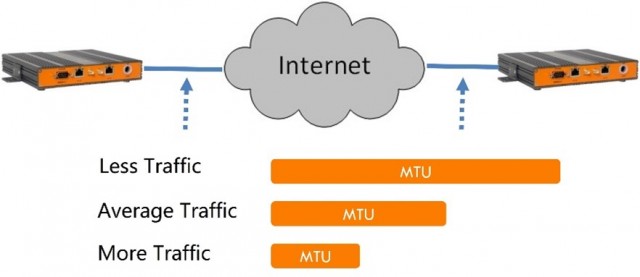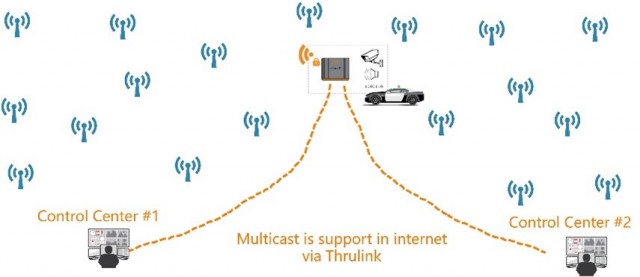Why ThruLink™ Is the Best Choice for Live, In-Vehicle Video Transmission
Today’s live video transmission requirements for in-vehicle applications are presenting numerous opportunities for security dealers and systems integrators.
Police transmit live video from both parked and moving vehicles to other vehicles and base stations, as well as the main control room. Fire departments leverage live video feeds from firetrucks, as do paramedics and ambulances. Of course, these use cases are not limited to just emergency services. The delivery of high value goods, cash-in-transit services and petrochemical transport are a few other examples where vehicle-based video transmission is proving highly beneficial to meeting security requirements while providing newfound business efficiencies.
ThruLink™ to the Rescue!
The most commonly used solution for these types of applications involves a 4G/LTE router; however, usage of any standard router can potentially include the following issues:
- Live video streaming may not be encrypted, thus not secured
- Multicasting will likely not be supported
- Live video quality can often be unstable due to a fixed maximum transmission unit (MTU) packet size
It is highly likely port forwarding will be necessary at each router placement, further complicating the setup.
Unstable live video transmission can occur as vehicles travel past the different base stations. The available 4G frequency band from each base station can fluctuate depending on the amount of traffic at each station. The more users, the less available band. Conversely, fewer users at any given base station will increase the router’s available band.
This fluctuating band will cause problems. Generally, cameras transmit the standard size MTU for Ethernet, which is 1,500 bytes. Dynamic MTU (DMTU) is the method or scheme whereby the connection speed and quality are constantly checked to determine the optimal MTU. When the available band is large enough, there is no issue with transmitting the whole packet. But if the available band is reduced, the whole packet will be difficult to transmit — packet dropping will happen, resulting in poor video quality. But do not fret! ThruLink detects the end-to-end traffic so that it always transmits the correct size MTU. KBC refers to this optimal MTU as Preferred MTU (PMTU), resulting in the stable transmission of live video.

Live, in-vehicle video is commonly streamed to different sites simultaneously. However, even if the camera supports multicast, oftentimes there is no way for the public Internet to allow multicast streaming. With ThruLink, simultaneous multicasting to multiple sites is possible, as depicted in this diagram:

Security Encryption and Ease of Use
ThruLink implements a unique two-way authentication process with continuous encryption including AES, Blowfish and Camelia ciphers up to 256-bit. This multifaceted encryption ensures ThruLink will always be secure with no need for port forwarding rules on any remote sites and no potential vulnerabilities. In fact, ThruLink can be securely used over any public or private network. This includes 3G/4G and 5G where available. Because ThruLink is optimized for video and audio, this hardware VPN device is ideally suited for in-vehicle applications.
Notably, ThruLink is a breeze to implement. Consider: The device supports multicasting, operates with no fixed public IP and requires no network changes. Want to see ThruLink in action?
Check out this video clip for true live video transmission
If you are interested in testing this type of vehicle application, please get in touch with KBC Networks at This email address is being protected from spambots. You need JavaScript enabled to view it.
When you subscribe to the blog, we will send you an e-mail when there are new updates on the site so you wouldn't miss them.


